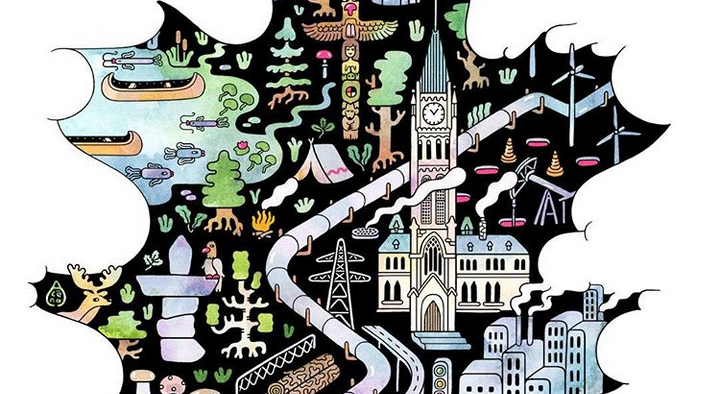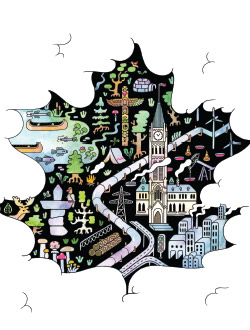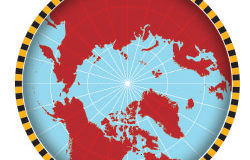Next Reflections on the Indigenous Question

 What is justice for Canada’s Indigenous people? Will a just Canada still be governable? Why modern treaties and a new domestic imagination may still save the day
What is justice for Canada’s Indigenous people? Will a just Canada still be governable? Why modern treaties and a new domestic imagination may still save the day
John Rawls once wrote that “the basic structure of society is the primary subject of justice.” Canada’s basic structure consists partly in a federation of provinces and territories, a federal crown, universal health care, the rule of law, bilingualism, multiculturalism, and an education system that is largely merit-based. And yet this basic structure has worked manifestly against Indigenous interests. Indigenous Canadians, in comparison to settler Canadians, suffer worse health outcomes, lower levels of income and education, greater exposure to violence, exceedingly high levels of suicide, and incarceration rates so high that Indigenous offenders comprise more than a quarter of the federal prison population, while accounting for less than five percent of the population of Canada. What, then, does justice look like for Canada’s Indigenous people? And can this justice coincide with a Canada that is still governable this century?
Last July, Canada celebrated 150 years of modern existence. The country’s founding constitutional document is the Constitution Act, 1867. And one of the document’s key features, known as the division of powers, is set out in sections 91 and 92. These sections establish areas of exclusive jurisdiction as between the federal and provincial orders of government. A subject of near-constant litigation since the 19th century, the division of powers is coming under increasing strain in today’s Canada. Provinces are clamouring for a greater role in trade and national projects like pipelines, while Indigenous people are, at the same time, exercising growing influence over those same national priorities even in the absence of a clear constitutional role.
The relationship between Indigenous and settler peoples has undergone many iterations. This means that there are many lessons to be learned from our shared history. One of the most important lessons concerns the fundamental question of how it is that we are to live side by side. The era of peace and friendship treaties stands in stark contrast to later treaty regimes, and is echoed today in modern-day treaties between Indigenous people and settler governments. Relearning how to understand one another, while creating a shared political order in order to accommodate those interests, is increasingly necessary in a rapidly changing country operating in increasingly precarious international circumstances.
Canada’s treaty-making history with Indigenous people is at once glorious and shameful. (An old joke has it that when it comes to treaty-making, First Nations think of it as a wedding, while the Crown sees it as a divorce.) Early treaties were powerful exercises that witnessed the creation of a shared political space – a species of proto-multiculturalism, as it were. Known as the peace and friendship treaties, these early agreements evidenced heartfelt commitment to work through the matter of what it meant for settler people to co-exist with Indigenous people. Settlers did not get to call the shots. Instead, colonial negotiators put on the table what they needed, and their Indigenous counterparts did the same. Together, they strove to work out a unique political relationship that accommodated the needs of all parties.
Benjamin Franklin published a folio of these treaties, characterizing them as a unique form of literature. They are not contracts, nor are they documents of surrender; rather, they bear witness to a commitment to work together over time, establishing the contours of an ongoing political relationship known as the covenant chain. And although most of the peace and friendship treaties are simply records of dialogues – not signed documents – where claims and counterclaims were made against Indigenous and colonial representatives alike, these treaties were, for all practical intents and purposes, agreements between partners creating a political space to hold one another to account.
These agreements ceased after 1763 – the year that the Royal Proclamation declared that lands not sold or ceded to the Imperial Crown were recognized as being ‘reserved for the Indians.’ The Crown worked somewhat half-heartedly to keep settler people from usurping Indigenous territories for the better part of half a century, but in the end the primary consequence of lands being reserved for the Indians was not the protection of Indigenous land. Instead, treaty-making became a mechanical and formalistic legal process for the purpose of turning Indigenous lands into property interests held by settlers and their corporate entities.
Even the form of treaty-making underwent vast change. Gone were the long days and nights of working to understand one another; in their place came boilerplate documents laying the groundwork for the Crown to exercise its right to ‘take up treaty lands’ as needed for settlement, or otherwise desired for resource exploitation. Indigenous people were given oral promises about how they would be able to preserve their way of life – their lands and systems of government – but these were, for all practical intents and purposes, lies and stratagems, unsupported by the written text of what came to be known as the numbered treaties.
As the numbered treaty regime made its way across the country, Indigenous people became increasingly suspicious of Crown representatives. Of course, with the buffalo all gone by 1879, prairie First Nations lost their primary source of food and the raw materials for clothes and shelter. The federal Crown, led by John A. Macdonald, determined that it could simply starve Indigenous people into submission. Bref, the numbered treaty regime continued its westward march.
British Columbia did not join Confederation until 1871. Until then, it was little more than a series of Hudson Bay trading posts – none of which were bound by the terms of the Royal Proclamation. As such, few treaties were ever made with the Indigenous people who surrounded the villages and the gold rush trails that marked out settler presence. By the time British Columbia became a province of Canada, all pretense of legal duty to Indigenous people had been put aside, and the province was surveyed as fee simple lands, handed out to the first non-Indigenous takers.
What all of this means is that Crown officials have worked to engage with First Nation partners in a proper treaty regime (the peace and friendship treaties) but have also, through the numbered treaties, simply gone through the motions of an agreement in order to secure property rights in Indigenous lands. In addition, the near-absence of any treaties in British Columbia and the Canadian North has led to the third iteration of treaty-making between Indigenous peoples and the Crown: the modern-day treaty.
The modern-day treaty is more like the peace and friendship treaties of 300 years ago than the numbered treaties of the past century. These are comprehensive documents, drawn up by teams of lawyers, and negotiated over a period of years. Modern treaties are, however, complicated contracts, and in this way they diverge from the spirit of the peace and friendship treaties. Today’s treaties between First Nations and the Crown set out a global vision of how settler and Indigenous people will, in areas covered by the treaties, live side by side. Most importantly to present-day Indigenous signatories, modern treaties set out governmental powers to be exercised exclusively by First Nations on the treaty territory in question. In other words, if peace and friendship treaties naturally assumed First Nations to be sovereign entities – free to do whatever they wanted in their own territories – while the numbered treaty regime assumed that First Nations exercised no rights of sovereignty, were wards of the state, and a broken people to whom limited municipal style authorities could be granted, then modern-day treaty agreements recognize a First Nation’s right to act as a sovereign – a government – with powers set out in the treaty and in respect of a territory that is clearly defined.
It is easy for most Canadians to forget that the territory of Nunavut exists as a self-governing treaty land, or that nearly 40 percent of Canada’s land mass is covered by modern-day treaties – mostly in the north, and therefore out of sight for the denizens of Canada’s largest and entirely southern metropolises.
Modern treaties are no small challenge. Negotiations can, and often do, take decades to complete, and at considerable expense. First Nations in British Columbia finance these negotiations with funds advanced to them by Canada in the expectation that, upon settlement of the treaty, the Crown will be repaid 80 percent of what was borrowed. This would seem to create an incentive to come to agreement in a timely fashion, but that has not been the case. Since its founding in 1993, the British Columbia Treaty Commission has brought only three treaties to the point of ratification and implementation; nine more remain in the final stages of negotiation; and 45 First Nations are in the earlier stages of negotiations at a cost to date of more than a billion dollars.
Negotiations have moved slowly in large measure due to the sheer complexity of setting out comprehensive agreements that necessarily include deliberations concerning questions such as whose law-making power is to be paramount when a conflict of laws arises; how to co-manage fisheries and forests; and, inter alia, the taxation powers of whom over whom and what. Behind these complex legal formulations and determinations is a much less complicated matter: federal Crown policy requires that First Nations entering into modern-day treaties agree to surrender all future claims to as much as 95 percent of their traditional territories. Official policy no longer refers to this as ‘extinguishment’ – relying instead on the euphemistic term ‘certainty.’ Either way, convincing your tribal brothers and sisters that giving up rights to more than 90 percent of their community’s traditional territory in exchange for recognition as legitimate sovereigns over the remaining five or even 10 percent is, understandably, a hard sell. As such, having to agree to this surrender as a condition for advancing through the negotiation process is regarded by many First Nations as an excessively bitter pill to swallow.
Modern-day treaties are nevertheless appearing – mostly in the West and the North of the country, but at least one negotiation is taking place in each of the three Maritime provinces. In Ontario, the Algonquin land claim is currently under negotiation for a treaty area that covers an enormous swath of the province – including Ottawa, capital of Canada, and stretching from the near north to the St. Lawrence River. What all these negotiations have in common – besides the presence of the federal Crown at the table – is that the treaties being negotiated cover lands that have not yet been the subject of treaties between First Nations and the Crown. In other words, modern treaties are being negotiated over lands that are ostensibly part of the Canadian state but that were never ceded to the Crown by Indigenous nations.
Federal policy, it would appear, is to enter into negotiations with claimants that can help Canada to legitimize the reach of state power. At present, the federal and provincial governments exercise jurisdiction over unceded Indigenous lands as though their sovereign reach had some underlying legal justification. And yet even the Supreme Court of Canada has, in recent years, referred to Crown sovereignty over unceded Indigenous lands as merely ‘the assertion of Crown sovereignty’ and ‘de facto Crown sovereignty’ – in both cases hardly glowing endorsements for the legitimacy and exercise of state power. Indeed, the Court’s characterization of the Crown’s ‘de facto sovereignty’ is, in Ryan Beaton’s words, “somewhat like a suspended declaration of invalidity” – a situation in which the Court has essentially determined that the federal Crown’s assertion of sovereignty is invalid, but temporarily suspends this declaration until a legal process of treaty-making is completed. At that point, treaty lands are subject to the First Nation signatories, while the remaining lands are ceded into the sovereign reach of the federal Crown.
But what of those First Nations that, willingly or not, signed onto the numbered treaty regime rolled out more than a century ago? Those numbered treaties cover most of Ontario, Manitoba, Saskatchewan and Alberta. The benefits of those treaty lands fall entirely to the provinces, while the First Nations that signed the agreements have been relegated to comparatively tiny reservations. (The federal government’s own numbers indicate that reservations make up approximately 0.3 percent of Canada’s land mass.) These First Nations are largely governed by the Indian Act – a federal statute that provides First Nations with minimal powers, akin to a municipal government. However, unlike municipalities, First Nations under the Indian Act have very limited powers of taxation and exceedingly small economies over which they can levy taxes. The structure conduces in practice to Aboriginal poverty and guarantees that the only way that First Nations can function as governments is to subsist on transfers from the federal treasury.
The experience of First Nations in Yukon, in Canada’s northwest, suggests the counter-example: Yukon’s 14 First Nations are all signatories of comprehensive modern treaties, and generally enjoy better economic and health indicators and outcomes than their counterparts living under the Indian Act.
The experience of First Nations in Yukon, in Canada’s northwest, suggests the counter-example: Yukon’s 14 First Nations are all signatories of comprehensive modern treaties, and generally enjoy better economic and health indicators and outcomes than their counterparts living under the Indian Act. Bref, First Nations subject to modern-day treaties generally do significantly better in socioeconomic measures than those First Nations without modern treaties, and who govern by Indian Act rules. Why? Answer: because First Nations living under the auspices of a modern treaty have the opportunity to act as governments. They can determine the course that they would like their community to pursue, they can set goals, and they can achieve those ends by passing laws and raising money through taxation of people, places and resources. By contrast, First Nations under the Indian Act are largely poor and exercise extremely constricted law-making powers, while sitting on reservations so small that virtually no resource activity can exist to be taxed.
What’s to be done? The relationship of First Nations with the Crown is in desperate need of a wholesale overhaul. It makes sense to consider bringing at least some of the numbered-treaty First Nations into the modern treaty regime. One can imagine, in the coming years and decades, new Indigenous confederacies across the North, from Ontario to Alberta – willing amalgams of individual First Nations, bound together by the chance to act as able governments serving their citizens. Like the treaties negotiated in British Columbia and Yukon, these new Indigenous confederacies would have the ability to tax a resource base, and to use those funds to build schools, roads and water treatment facilities. Transfers from the federal Crown would largely be a thing of the past, just as we might reasonably expect these new treaty nations to contribute to the federal equalization formula that evens out the ability to provide services as between have and have-not provinces.
But can such an unruly mix of Canadian provinces, territories and First Nations be governed? Answer: it is not at all clear or obvious that the federal government will be able to govern successfully or control such a revised constitutional or quasi-constitutional arrangement in Canada.
But can such an unruly mix of Canadian provinces, territories and First Nations be governed? What role would the federal government have in a confederation such as this? Answer: it is not at all clear or obvious that the federal government will be able to govern successfully or control such a revised constitutional or quasi-constitutional arrangement in Canada.
Of course, it is also not obvious that Canada, in its current form, can be sustained for the long run. In the last 35 years, Quebec has twice held referenda to secede – once coming within a percentage point of voting to leave Canada. The Canadian military has been called in to quell Indigenous dissenters in Quebec (Oka) and British Columbia (Gustafsen Lake), while Ontario contented itself with a paramilitary police force to shoot and kill Dudley George, an unarmed Ojibway protester. In the past year, at Standing Rock, in the US, some 4,000 protesters came out in freezing cold conditions to resist a pipeline across Indigenous lands – a protest that was quelled with paramilitary forces using dogs, pepper spray and water cannons to douse protesters. To be sure, Standing Rock was just across the Canada-US border in North Dakota, but the protesters were international, and the energy and anger of that movement will rise again as the federal Crown moves to build similar pipelines across First Nation territories in Canada.
International uncertainty and pressures – strategic and ideological alike – also put into question the capacity of the federal government to hold together, in the absence of meaningful internal reforms, in the decades to come. Bref, we must begin thinking about and planning for a Canada that can bind itself willingly together against a coming storm. Otherwise, it could well come apart, unwillingly.
Treaty-making in Canada, done right, has always been about forging agreements and dialogues in challenging times. It is possible that still greater challenges lie ahead, which is why we should learn the lesson of the peace and friendship treaty regime: our agreements must underlie a commitment to continue living side by side, adapting to new circumstances, and respecting one another as sovereigns in a shared land. This does not mean the end of federalism, and there is no guarantee of success in terms of the long-term happiness of the country. But this will mean adapting, with great seriousness, to the needs of citizens and polities in a landscape much changed in the century and a half since Canada’s modern founding.
Douglas Sanderson, of the Opaskwayak Cree Nation, is Associate Professor in the Faculty of Law, University of Toronto.







